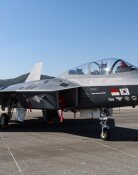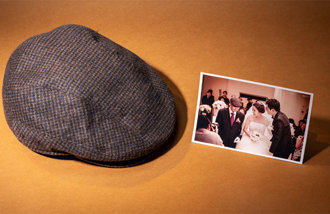Missing part of national treasure found in museum storage
Missing part of national treasure found in museum storage
Posted January. 20, 2017 07:18,
Updated January. 20, 2017 07:31

The complete pagoda from Goryeo Dynasty, which is famous for its unique round-shape of stone stupa’s main body, can finally be appreciated. As the stone lion from stone stupa of master Jigwang at Beopcheon temple site (national treasure No. 101) has been also found in the same place, some note that thorough investigation must be made on unregistered cultural assets.
“The topmost part of stupa of leader of the nation Hongbeob, which was vertically destroyed was found last year when unregistered stone artifacts, were being investigated in the storage,” the museum said. The investigation showed that the part was broken away from the stupa and separately kept from somewhere between 1961 and 1967. It is assumed that the part vertically split during the Japanese colonial era was not able to be fixated to the main body and, therefore, separated in the 1960s. This was discovered while comparison was made on different pictures of stupa, which were taken during the colonial era and after 1945 when Korea became independent from Japan. It seems that because the separately-kept part was not properly recorded and kept, it was left unattended for more than five decades in the storage room. The stone lion from stone stupa of master Jigwang had also been known as being lost for some time but was found to have been kept in the museum storage while photo comparison was made.
The stupa of leader of the nation Hongbeob was originally erected in Jeongto Temple in Chungju, North Chungcheong Province, but later it was moved to Chungju county office during the colonial era and into Gyeongbok Palace in 1915. It is presumed that when the Japanese Government-General of Korea held Joseon Local Products Expo in September and October in the same year, the stupa was moved to the palace. Along with the treasure No. 359, the stupa was given preservation treatment and re-erected in the stone garden in the National Museum in Seoul in June last year. Back then, only roof of stone stupa was restored as the topmost part was not included in the re-erection.
The missing part was able to be returned to its whole stupa thanks to different scientific investigation. The museum took a picture of the topmost part with 3-D scanner, which was overlapped with the old photo taken in around 1918 to make accurate comparison in terms of shape, angle, size, etc. It turned out that the newly-taken 3-D image was exactly same with the one in the old image from 1918. Additional analyses through electron and polarizing microscopes, and X-ray diffraction and micromagnetic tests provided final confirmation that the stupa and the part have identical rock constituent (crystalline limestone).
Based on the recently-made scientific analysis, the museum plans to make complete restoration of broken topmost part and attach it to the stupa. Fortunately, the restoration is expected to be made successful without much difficulty as the part was split vertically, not horizontally. “After obtaining the approval for cultural heritage alteration from the Cultural Properties Committee, the restoration is planned to be completed within this year,” sources form the museum said.
Sang-Un Kim sukim@donga.com







